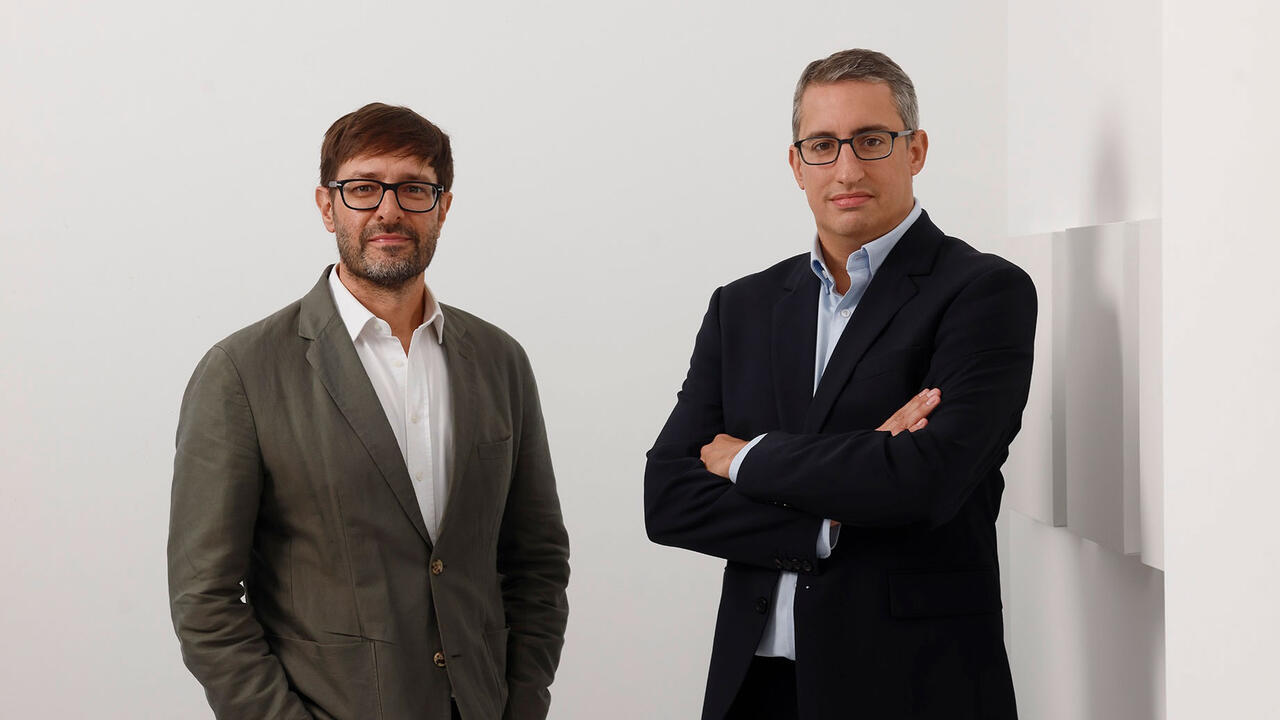Sabine Hornig

In recent debates about architecture and urban planning, the Modernist belief that social behaviour can be planned has been gradually replaced by the idea (maybe equally over-enthusiastic) that the the inner structures of society can best be understood by examining cityscapes. Sabine Hornig's work emphasises this shift from social construction to social analysis by exploring how architecture organises not only our world but our perception of it.
For her exhibition 'Rauhputz City' (Roughcast City), two enormous works were placed in the large, bright rooms of the gallery. Formally, they refer to both Classical sculpture and Modernist architecture. Plattenbau, Bosna (Slab Building, Bosna, 2000) is an example of GDR Modernism, a copy of the entrance to a house in former East Berlin. The walls, ceiling and floor of the sculpture are made of slabs of lightweight concrete, stacked and roughly connected to each other. Isolated from the rest of the building, the work appears as a small, generic house of its own. Only the foot-scraper provides a 'naturalistic' reference to the function of the original entrance area.
The other sculpture, Rauhputz Forest (Roughcast Forest, 2000), comprises a door and large window set into a diptych-like wall module. Although a doorknob on both sides gives the impression that one can walk through the door, it is actually locked. The window opens up onto a view of a dense forest - in fact a large transparency. As if it were a reflection, you could make out a model of the sculpture itself situated in a glade beyond the trees. The closed door, with the vista next to it, lends the object the appearance of a facade, and as you walk around it you are confronted with both a model-as-sculpture and a vista of a model-as-sculpture.
In previous works, Hornig has turned architecture into a kind of viewing apparatus, what Beatriz Colomina referred to as a 'camera' in reference to Le Corbusier's window views. For Studio Installation II (1993), which Hornig created during a residency in the Berlin Kunst-Werke, she built a small passageway that lead to two windows, which were placed at such an angle that both views showed exactly the same detail of a building situated opposite the studio.
Compared with Studio Installation II, these sculptures left the room physically untouched. Unlike the traditional perception of a gallery as a place where pictures on walls function as windows onto an imaginative space, Hornig's work inverts and confuses traditional classifications of inside and outside, here and there. The walls-turned-sculpture function like isolated modules of the urban reality machine - at once the frame and the framed.
















